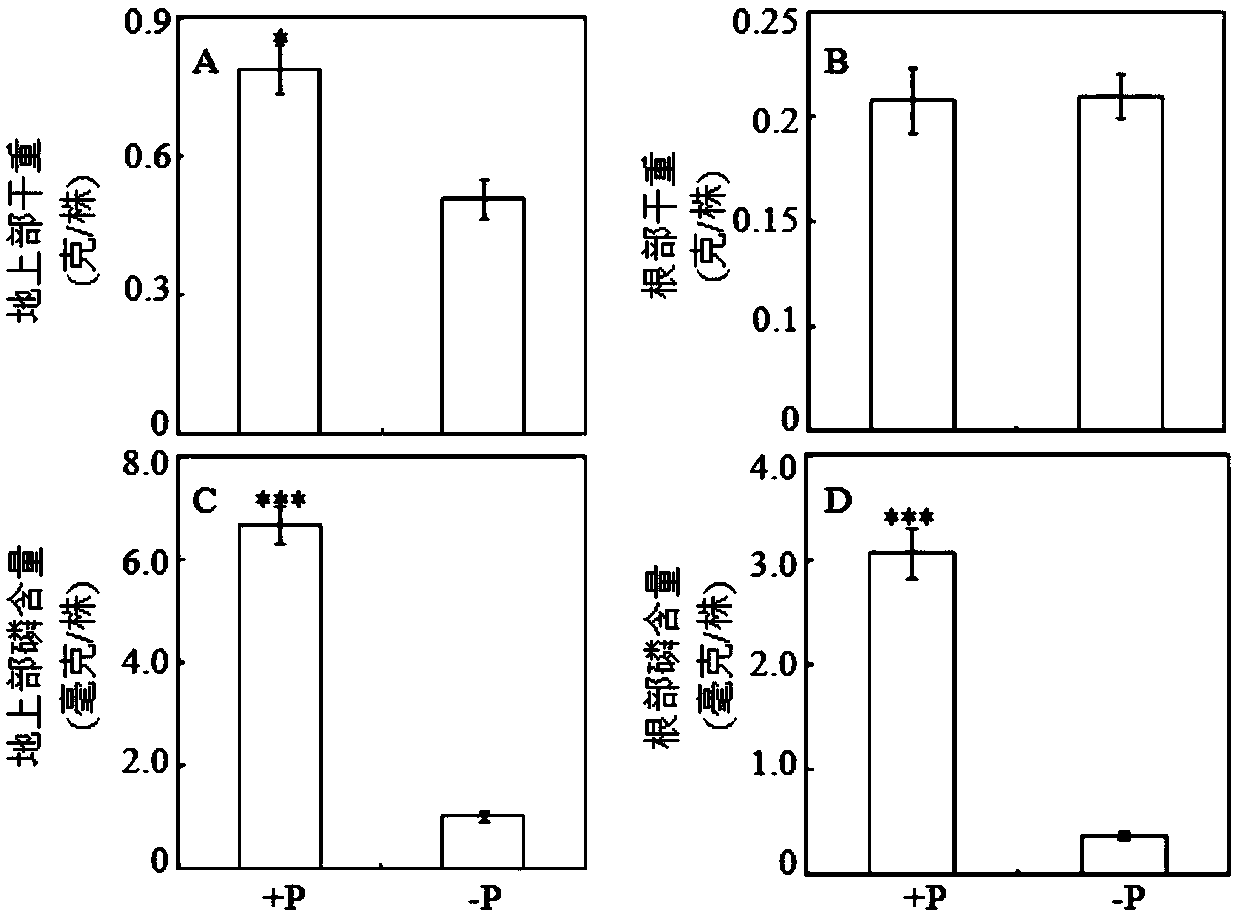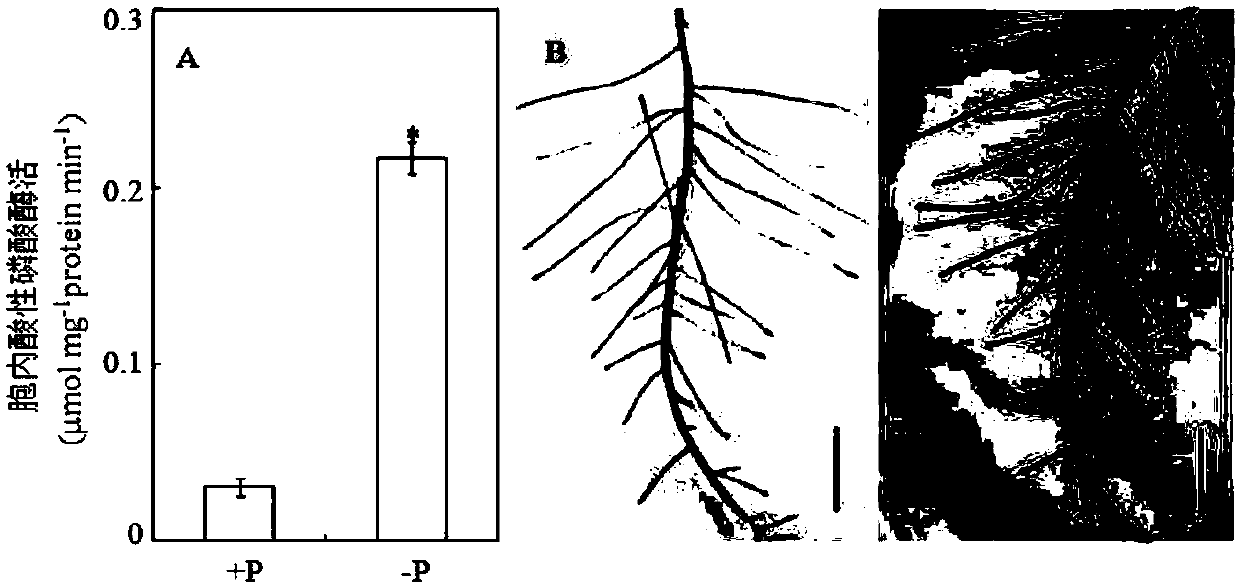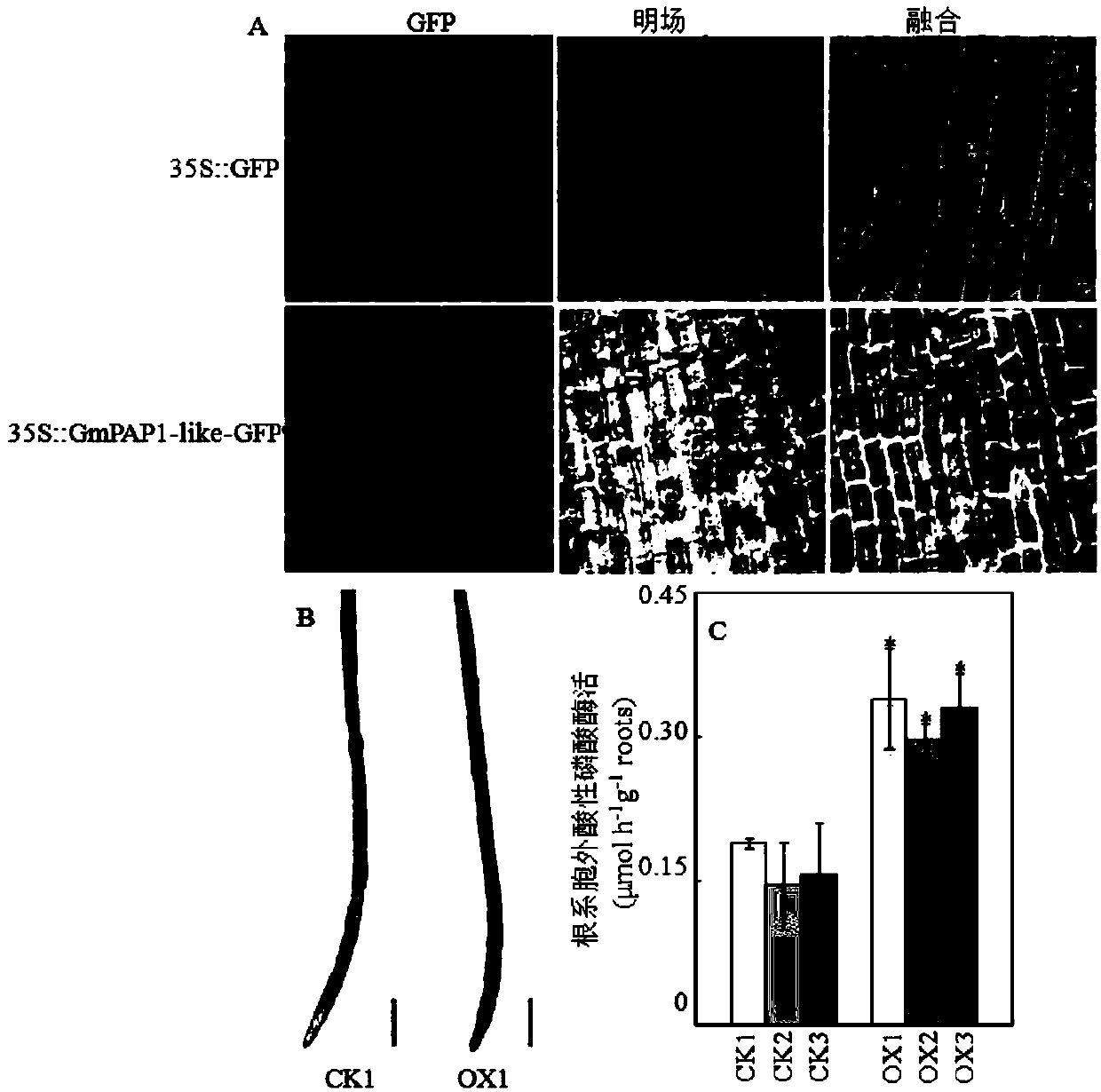Acid phosphatase GmPAP1-like protein gene and application thereof
A phosphatase protein and acidic technology, applied in the field of plant biology, can solve the problems of low phosphorus utilization rate, increase the risk of water pollution, phosphorus enrichment, etc., achieve good application prospects, enhance the activation and utilization of organic phosphorus, Enhanced Adaptive Effects
- Summary
- Abstract
- Description
- Claims
- Application Information
AI Technical Summary
Problems solved by technology
Method used
Image
Examples
Embodiment 1
[0054] The acquisition of embodiment 1 gene
[0055] 1. Hydroponic experiments to study the effect of phosphorus availability on soybean roots
[0056] Soybean variety YC03-3 was selected as plant material. After the seeds germinated, the seedlings with basically the same growth were selected and transplanted into the seedlings containing 5 μM (-P) and 250 μM (+P) KH 2 PO 4 soybean nutrient solution treatment. After 10 days of treatment, the above-ground and underground parts of soybean were harvested, and their dry weight, phosphorus content and root acid phosphatase activity were measured.
[0057] (1) Effect of phosphorus availability on soybean dry weight and phosphorus content
[0058] About 0.1 g of dry soybean sample was ground into powder and washed with H 2 SO 4 and H 2 o 2 Cook. The supernatant of each sample was then transferred to a volumetric flask and made up to 100 mL with secondary water. The phosphorus content in the solution was measured with a flow...
Embodiment 2
[0076] The construction of embodiment 2 carrier
[0077] 1. Construct an overexpression vector:
[0078] Using the soybean YC03-3 root cDNA as a template, the primer pair ORF-F and ORF-R were used to amplify the GmPAP1-like ORF1851bp fragment. After the PCR fragment was recovered and sequenced correctly, the fragment and the target vector were digested with XbaI, and the GmPAP1 The -like gene was connected to the target vector PTF101s to obtain the overexpression vector PTF101s-GmPAP1-like.
[0079] Upstream specific primer ORF-F (SEQ ID NO.7)
[0080] 5'-CCGGGGATCCTCTAGAATGATGATGAGTGGGATGG-3'
[0081] Downstream specific primer ORF-R (SEQ ID NO.8):
[0082] 5'-GCAGGTCGACTCTAGATCAAGATGCTAGTGTTGTAGCTG-3'
[0083] 2. Construction of expression vector for subcellular localization analysis:
[0084] According to conventional methods, soybean root RNA was extracted and reverse-transcribed into cDNA. Using the cDNA as a template, primers F-F and F-R were used to amplify the GmP...
Embodiment 3
[0089] The research of embodiment 3 transgenic materials
[0090] 1. Obtaining and testing of genetically modified materials
[0091] (1) Obtaining hairy root of transgenic kidney bean
[0092] The constructed overexpression vector PTF101s-GmPAP1-like and the vector pEGAD-GmPAP1-like were respectively transformed into Agrobacterium rhizogenes K599, and Agrobacterium-mediated transformation of kidney bean hairy roots was used, and this strain was used for subsequent phenotypic identification Tie.
[0093] Empty vector control: According to the above method, the overexpression vector PTF101s was empty-loaded, and the same method was used to transform the hairy root of kidney bean, and the PTF101s empty-load control line (CK) was obtained.
[0094] (2) Detection of transgenic kidney bean hairy roots
[0095] Appropriate amount of samples were taken to extract RNA after the hairy root of kidney bean was formed, and after reverse transcription into cDNA, the effect of overexpres...
PUM
 Login to View More
Login to View More Abstract
Description
Claims
Application Information
 Login to View More
Login to View More - R&D
- Intellectual Property
- Life Sciences
- Materials
- Tech Scout
- Unparalleled Data Quality
- Higher Quality Content
- 60% Fewer Hallucinations
Browse by: Latest US Patents, China's latest patents, Technical Efficacy Thesaurus, Application Domain, Technology Topic, Popular Technical Reports.
© 2025 PatSnap. All rights reserved.Legal|Privacy policy|Modern Slavery Act Transparency Statement|Sitemap|About US| Contact US: help@patsnap.com



